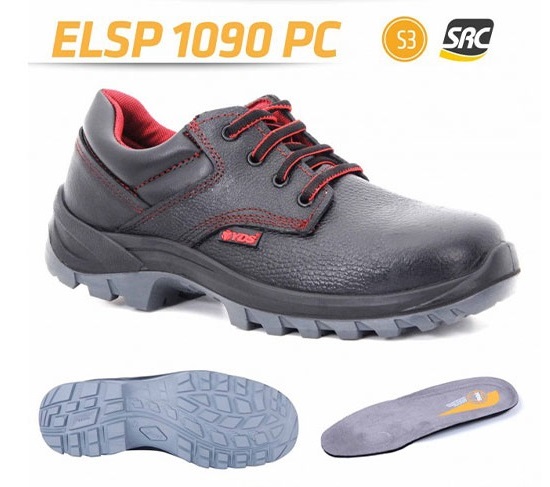- +90 216 471 1568
A shoe consists of many parts such as the sole, upper, toe, heel, and lining.
To decide which type of safety shoe we need, we should answer the following questions:
For example, if a protective toe shoe is needed and there is water in the environment, then a waterproof shoe standard (S2 or S3) should be used.
In environments where high temperature, acid, and alkali are present, nitrile soles are preferred; if there is a need for slip resistance, shock absorption, and comfort, options like double-density polyurethane soles can be selected.


If there is electrical current and a risk of electric shock in the environment, it is essential to use shoes with composite toe caps and soles that have electrical resistance. For insulation, the shoe should have a rubber sole and be resistant to electricity up to 15 kV.
If the risk analysis indicates that toe protection is not necessary, a non-steel shoe may be sufficient. If there is a risk of slipping, presence of petroleum and its derivatives, or chemical solutions, a slip-resistant shoe with an SRC sole must be selected.
Some materials and layers used in manufacturing a shoe (such as steel toe caps and slip-resistant soles) must also have separate certifications. By choosing YDS in your factory or field, you ensure international-level safety and comfort.
Let’s take a look at the best-selling ELSP 1090 model:| ELSP 1090 S2 |
|
Kullanım Alanı: Occupational Safety Standart: EN ISO 20345 Saya: High breathability printed leather. İç Astar: Highly abrasion-resistant, sweat-absorbent, and quick-drying inner lining. |
|
Sole Technology:
|
|
Insole: Anatomically shaped, removable, breathable open-cell polyurethane insole. |
|
Approximate Weight: 0.60kg |
İş Güvenlik Malzemeleri, Endüstriyel Yapıştırıcılar ve Teknik Hırdavat ürün gruplarına ait kalitesiyle tanınan markaların Türkiye distribütörlüğünü ve direkt ithalatını gerçekleştirmekteyiz